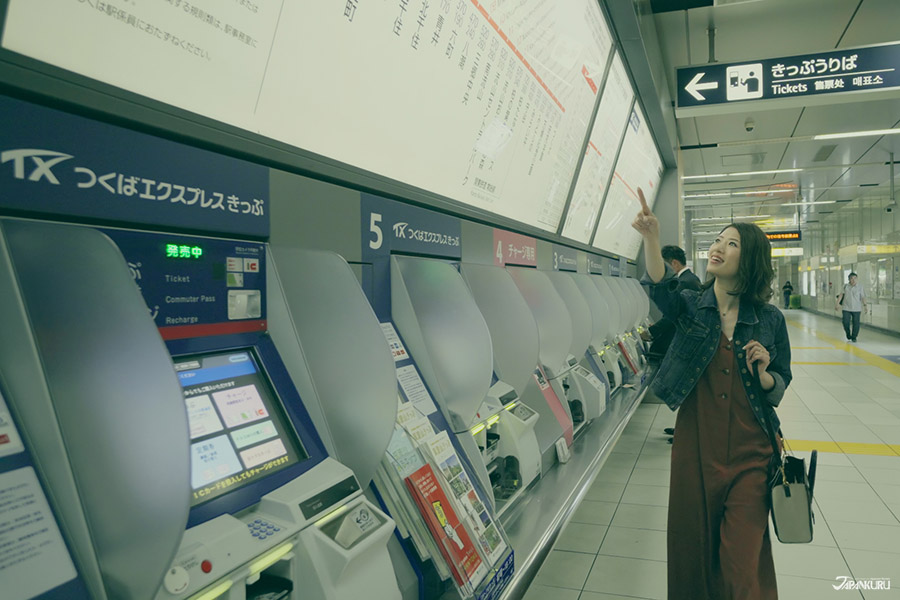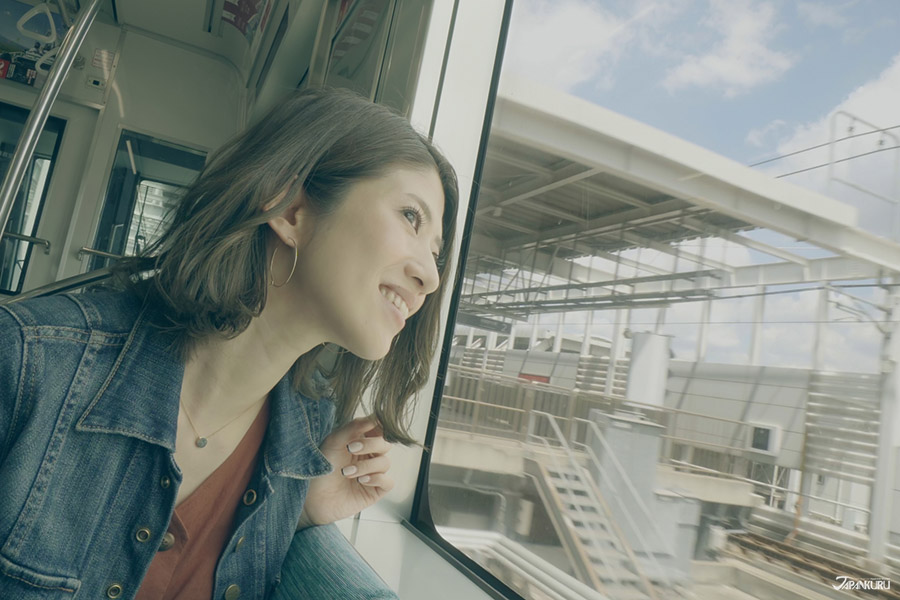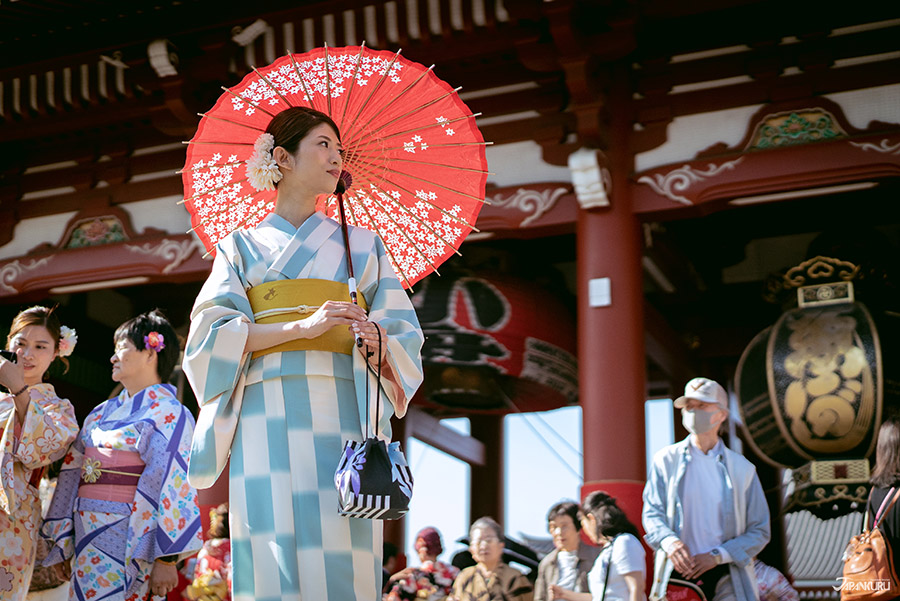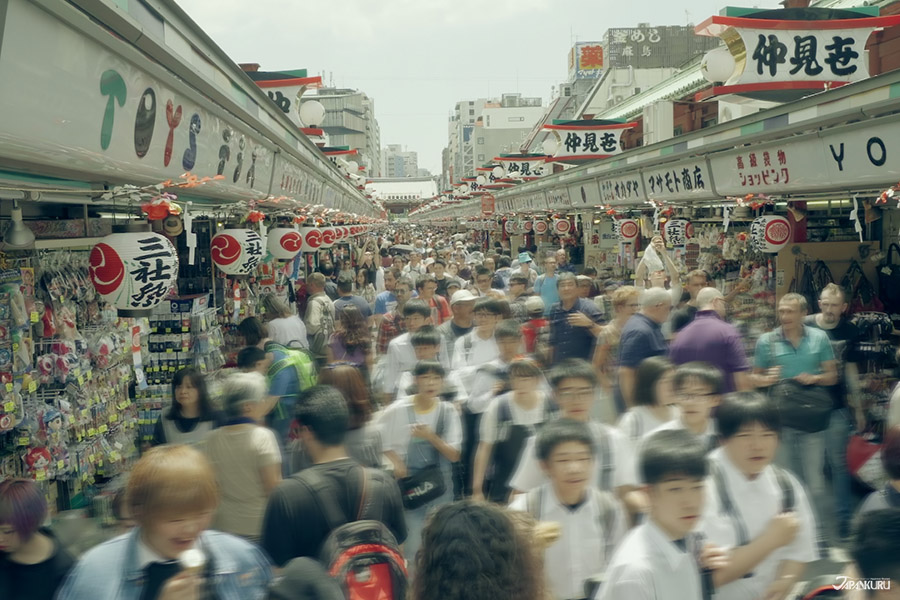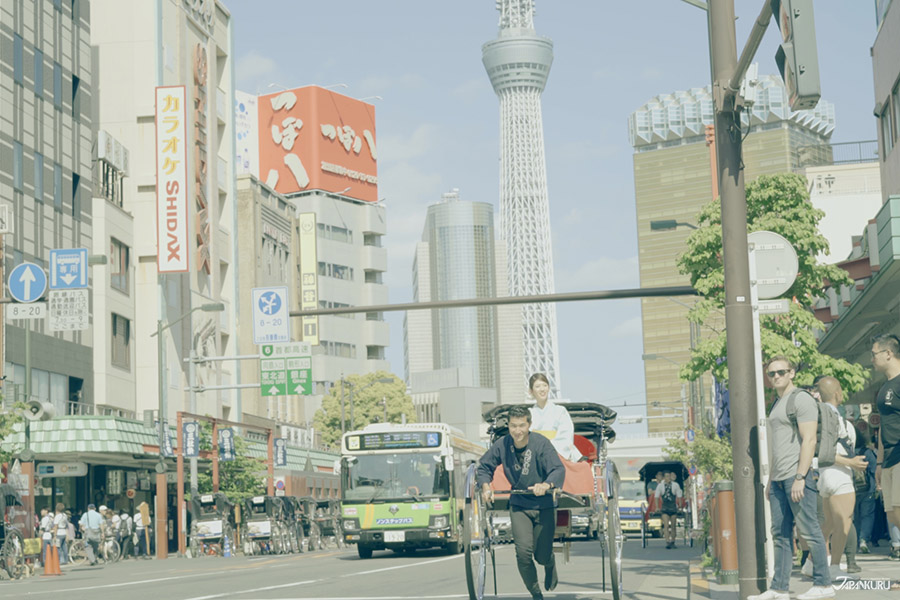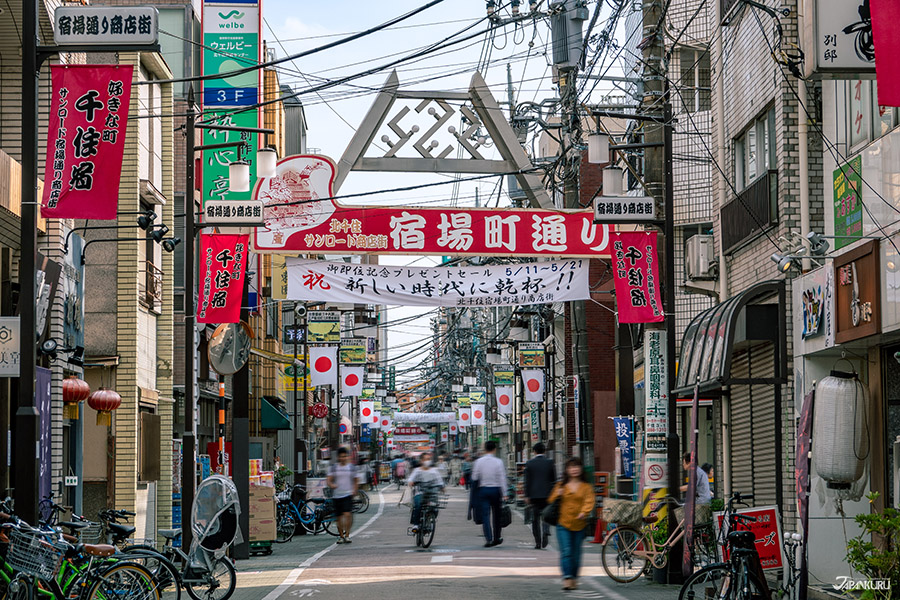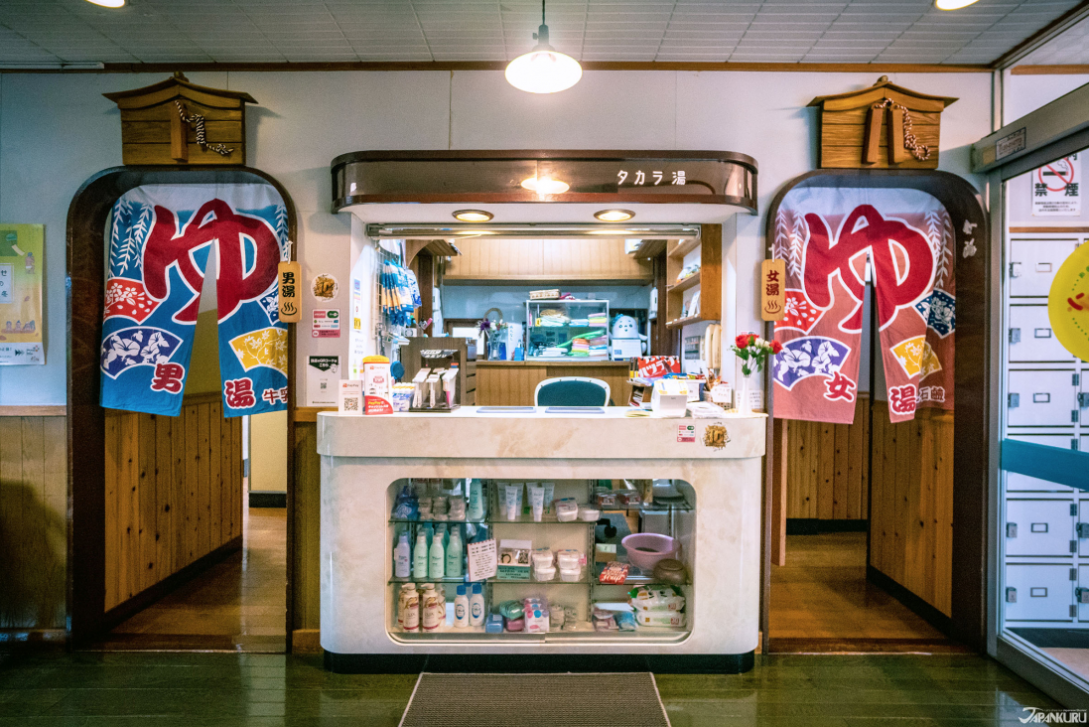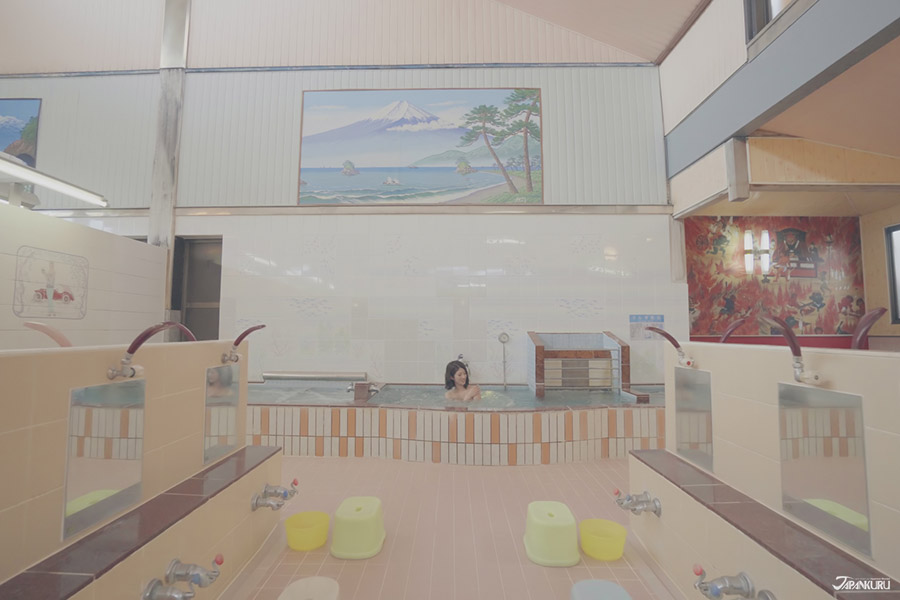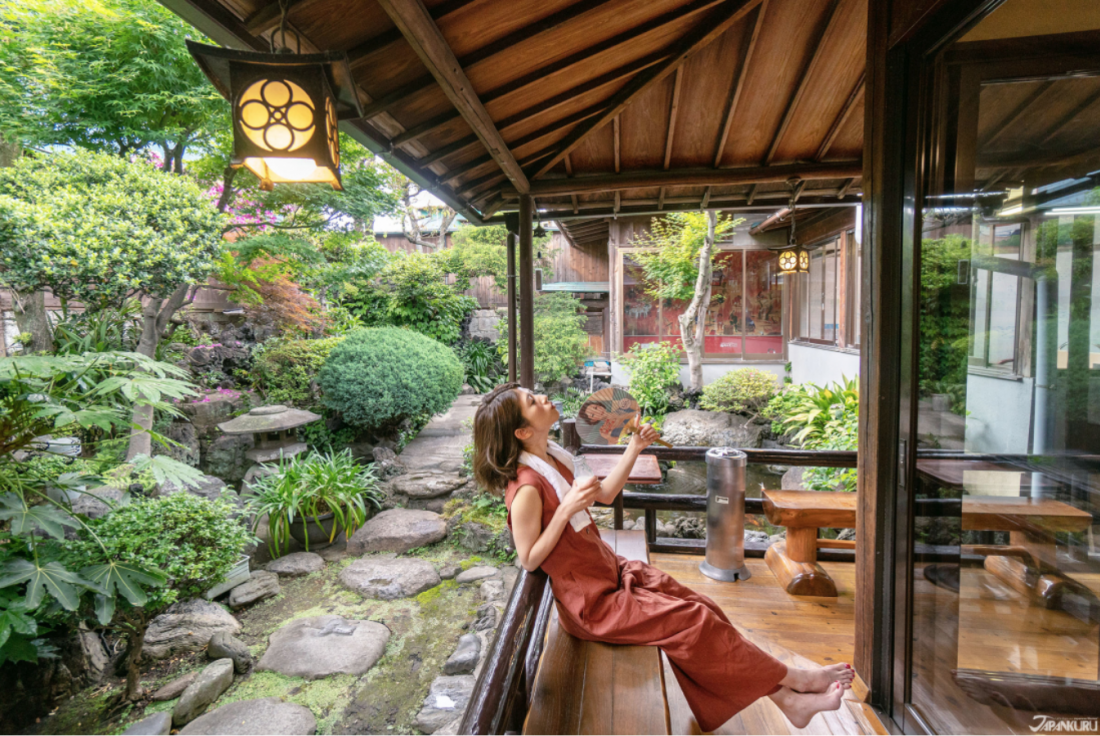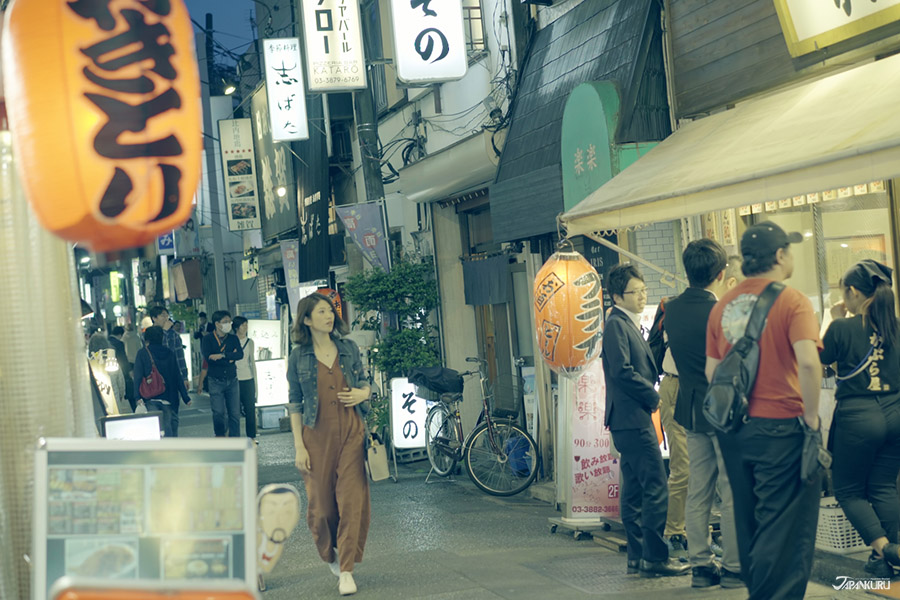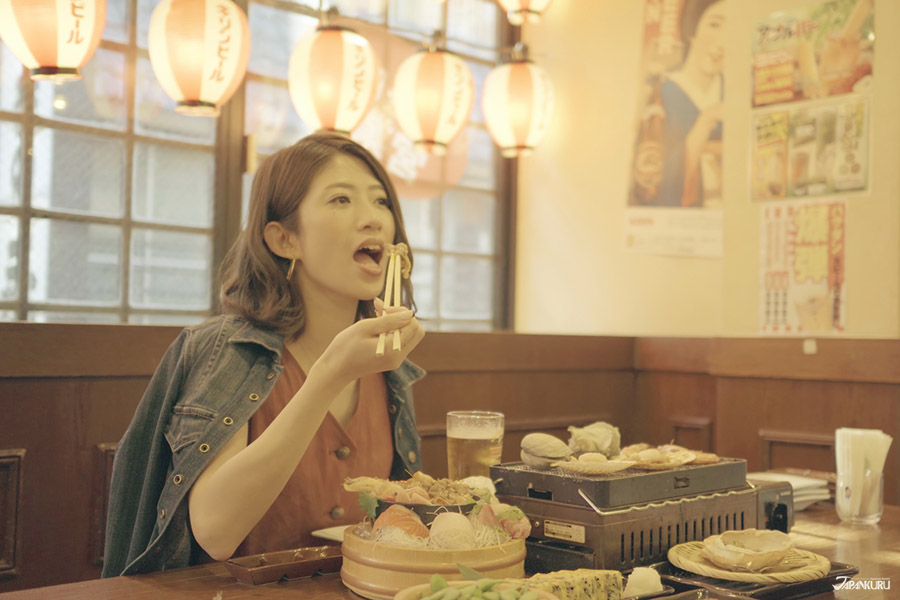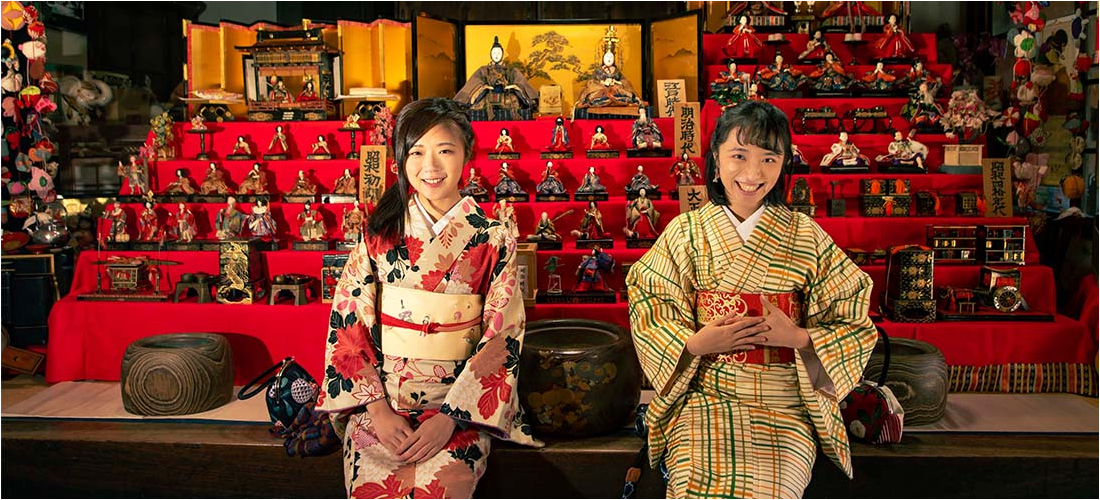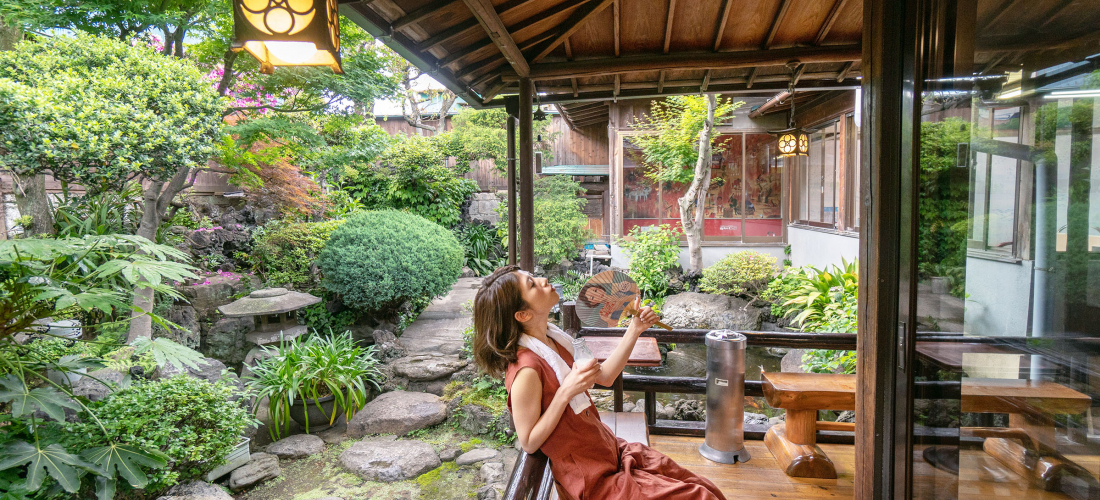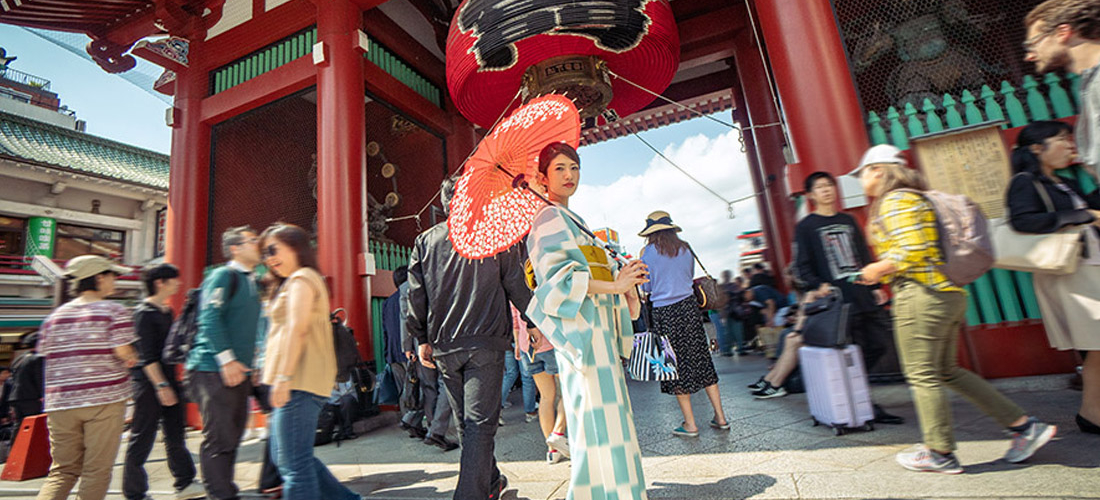
CONTENTS
Tokyo is a city with many faces. You could spend days in Shinjuku and Shibuya, ogling the tall buildings and chic modern facilities… but you shouldn’t miss out on Tokyo’s Shitamachi area either! We’ve talked a bit about Shitamachi before: it’s half of old downtown Tokyo, the half essentially designated for the lower castes of society. That history lends the area a unique charm, with the culture of the working people of Tokyo still felt all around. Follow in the footsteps of everyday Tokyoites through the years, and join us on our Tsukuba Express train trip through Shitamachi!
The Tsukuba Express Line: It feels a little like teleportation!
Akihabara → Asakusa → Kita-Senju, All Within 10 Minutes!
How much do you know about the TX Tsukuba Express Line?
The Tsukuba Express is a superfast railway that runs from Akihabara to Chiba, and leads to the Tsukuba area in Ibaraki Prefecture. The whole line is 58.3 km (36 miles) in length, with 20 stations. Hop on the train, and in less than an hour, you can get from Mt. Tsukuba (one of Japan's "100 beautiful mountains") in Ibaraki Prefecture, to Akihabara in downtown Tokyo. This may not be a bullet train, but it's speedy! And that makes it a pretty efficient way to get around the Tokyo area. The line directly connects Akihabara to Asakusa (in just four minutes), and then Asakusa to Kita-senju (in just six).
Here at JAPANKURU, we've already written about a few of the cool places you can visit along the train line. That includes the nostalgic atmosphere of Nagareyama, and Mt. Tsukuba, which some visitors believe is on par with Mt. Fuji. If you want to spend a day really riding the rails, Tsukuba Express even has a few special deals on passes that include access to some of Tokyo's subway lines. Use these to your advantage, and plan some spectacular days out!
Check the map and buy your tickets (all in English, of course), you'll be on your way in no time.
This time around, however, we're not taking any trips out of the city. We're just going to take advantage of the speed and convenience of the Tsukuba Express to take a tour of Tokyo's Shitamachi area, and enjoy the view on the way!
Let’s Start Bright and Early, in Asakusa!
First Stop: Head to Toe Edo Asakusa Style
Start your day right by taking a speedy trip on the Tsukuba Express to Asakusa. If you've spent a fair amount of time in Tokyo before, you might already know that the Tsukuba Express station is in a different location from the rest of Asakusa's subway lines. Exit the station and you'll find yourself steps away from the area's very popular Don Quijote (where you can buy just about anything), an old performing arts center, and some of Asakusa's charmingly old-school shopping streets. It's hard to walk around the area on a nice day without seeing people strolling by in kimono (and sometimes yukata), which sure makes it tempting to follow suit! If you want to try out the traditional clothes, but aren't sure where to start, we recommend Asakusa's Aiwafuku for kimono rentals.
All dressed up in Asakusa, you might forget what decade you're in… or what century.
Second Stop: Nakamise Shopping Street
Once you're outfitted in an elegant kimono, point yourself towards the Kaminarimon Gate at the front of Sensoji Temple (sometimes nicknamed Asakusa Temple). Once you're there, turn towards the temple, and get going! Lots of travelers make it to the Nakamise shopping street on their first visit to Tokyo, but it's such a lively place that you're sure to have new encounters every time you visit. With international visitors from all over the world bringing energy to a street bursting with traditional Japanese culture, it's like there's a festival going on every day (you could even visit the temple when there really is a festival going on, but it gets a little crazy!). Plus, all this makes it a great place to test your foray into traditional Japanese fashion, and you might get some strangers asking for pictures with you in kimono!
During daylight hours, Nakamise shopping street is always crowded and lively.
Third Stop: Burn the Incense at Sensoji Temple
It might not look it, but Asakusa's Sensoji Temple is the oldest temple in Tokyo! It's dedicated to Kannon Bosatsu, and has been guarding Asakusa for almost a millennium and a half. When the temple became a pilgrimage site in the Edo Period, Ieyasu Tokugawa became something of a patron. The area found prosperity, and turned into a real cultural center. After the fires caused by the Great Kanto Earthquake, and later air raids in Tokyo, all of Asakusa went into something of a recession… but thanks to enthusiastic support from locals of all walks of life, the area is once again brimming with energy. Sensoji Temple is an unshakeable local landmark, and it's still here for visitors from all over the world to see!
Before you get to the temple proper, remember to rinse your hands at the fountains with the ladles provided! It's part of the standard ritual for visiting temples, and it's fun to follow along with everyone else. If you want to really impress any locals who might be watching on, the process is usually completed as follows: take the ladle in the right hand and rinse the left hand, switch hands and repeat, then pour a little bit of water into your cupped left hand, and use it to rinse your mouth! If you look carefully, you'll notice that Japanese people do indeed spit out a little bit of water as part of the process. Make sure this spit goes in the gutter and not back into the fountain, though. Finish off by pouring any remaining water back onto the ladle's handle, to clean it too, and then returning it to the fountain.
In front of the temple's main hall is a huge incense burner, filled with smoldering incense sticks. You can burn your own incense if you want, but lots of visitors just gather around for a moment, and use their hands to waft the sweet smoke over their heads. This in itself is supposed to bring good luck!
Before leaving, don't forget to get a fortune from Sensoji Temple. Many temples and shrines offer "omikuji", the little paper fortunes, but Sensoji's omikuji are known to be particularly… stringent. Most people walk away with a fairly moderate, or slightly negative reading for their future. That means that if you get genuinely good news in yours, you know you're in for a good time!
Fourth Stop: Catch a Ride in a Rickshaw
Have you ever seen the men (and more recently women!) lined up at Kaminarimon Gate, calling out for customers that they can pull through the city on their rickshaws? Have you ever taken a ride? Well, especially if you're wearing a kimono, Asakusa is a perfect place to try out the rickshaw experience. Instead of shuffling through the crowds, the vehicles will run you through all the alleys and avenues of the neighborhood. It's a relaxing break from being on your feet all morning, but it's still a pretty exciting adventure.
Afternoon Has Arrived… Where to Next? Kita-Senju!
When you're all done glamming it up in a kimono, and maybe you grabbed a quick lunch in Asakusa (try the Tokyo version of okonomiyaki, called "monjayaki"!), head right back to Asakusa's TX Tsukuba Express Station. Catch the next train north, and in 6 minutes you'll be in Kita-Senju.
Kita-Senju might not have historical sites with quite the grandeur of Sensoji Temple, but it's been a popular neighborhood since at least the Edo Period. One of the main streets of Edo, before the city turned into Tokyo, ran through Kita-Senju, connecting it to Mito in modern-day Ibaraki Prefecture. That means it's been a magnet for movers and shakers for hundreds of years, with the Mito Kaido road attracting travelers and locals looking to mingle. These days it's a modern area, and still a transportation hub, connecting a number of train lines. With lots of development, it's a desirable neighborhood for locals, but it still maintains some of that historical charm!
Kita-Senju's famous Shukubamachi Street.
First Stop: Refresh Yourself in the Steaming Waters of Takara-yu Bathhouse
With more and more modern citizens of Japan taking advantage of the convenience of their own showers and bathtubs, the Japanese culture of public baths (called sento, 銭湯, in Japanese) is slowly fading. But Kita-Senju is still an enclave for the bathhouses, with a variety of sento still hanging around and open for use. Stripping down and bathing with strangers is a liberating experience that you're unlikely to find, at least in such an everyday context, outside of Japan, so it's worth trying during your visit! One of our favorite Tokyo sento is Takara-yu, which we've recommended before. The building dates back almost 100 years, which is probably why it still has an airy porch open to a little traditional garden, which is the perfect place to spend some time post-soak. No matter the weather, feeling the breeze on your skin after bathing in the sento's hot water is really refreshing.
The retro entrance to Takara-yu, complete with extra toiletries for sale if you need them.
Over the Takara-yu bath hangs a scenic view of Mt. Fuji.
The porch is a great place to cool off in warm weather. In Japan drinking a chilled bottle of milk after a bath is a common habit, and we're not sure where this particular quirk of culture came from, but when in Rome…
Second Stop: Stroll Through Shukubamachi Street at Dusk
With its history as a hub for Edo travelers, it's no wonder Kita-Senju has always had good shopping and casual eats. The area's shopping streets are narrow affairs, with plenty of shops both old and new, selling all kinds of wares and food. Kita-Senju is a relaxed area during the day, but at night locals trickle out of their offices and come looking for some good drinks and grub. Move towards the train station and things heat up, with bright lights shining onto the sidewalk and food smells wafting through the alleys. It's a great place to find izakayas big and small (Japanese-style taverns, good for both dinner and drinks) when you want to try a variety of Japanese bar foods, or you can head to nearby Mekiki no Ginji for fresh seafood. You'll definitely go home with a full stomach.
All the lights and signs of Shukubamachi's many establishments lend it a cheery air.
You'll find Mekiki no Ginji, and the wide variety of seafood they offer, not far from Kita-Senju Station.
Wind Down for the Night Around the Station~
Not Read to Head Home Yet? Go Shopping!
If you get to Kita-Senju station and aren't quite ready to settle in for the night, don't you worry, the station has plenty to offer! With so many people passing through this transportation hub, around the station you'll find not just one, but two huge department stores, Marui and Lumine. After soaking in all the Shitamachi culture in the surrounding old-fashioned streets and alleys, revel in the modern brightly lit shops of the two department stores. Then, before you take the Tsukuba Express home, run to the rooftop of Kita-Senju station for one last atmospheric photo-op, in front of the Tokyo traffic.
Look out onto the city as the wind blows through your hair.
Why wait around? Zip through Tokyo on the TX Tsukuba Express!
Of course, the train line isn't limited to downtown Tokyo. Take the Tsukuba Express to Mt. Tsukuba itself, or enjoy a day in the Tokyo suburbs of Chiba. The Tokyo Metropolitan Area is your oyster!
COMMENT
FEATURED MEDIA
VIEW MORE 
A New Tokyo Animal Destination: Relax & Learn About the World’s Animals in Japan
#pr #japankuru #anitouch #anitouchtokyodome #capybara #capybaracafe #animalcafe #tokyotrip #japantrip #카피바라 #애니터치 #아이와가볼만한곳 #도쿄여행 #가족여행 #東京旅遊 #東京親子景點 #日本動物互動體驗 #水豚泡澡 #東京巨蛋城 #เที่ยวญี่ปุ่น2025 #ที่เที่ยวครอบครัว #สวนสัตว์ในร่ม #TokyoDomeCity #anitouchtokyodome

Shohei Ohtani Collab Developed Products & Other Japanese Drugstore Recommendations From Kowa
#pr #japankuru
#kowa #syncronkowa #japanshopping #preworkout #postworkout #tokyoshopping #japantrip #일본쇼핑 #일본이온음료 #오타니 #오타니쇼헤이 #코와 #興和 #日本必買 #日本旅遊 #運動補充能量 #運動飲品 #ช้อปปิ้งญี่ปุ่น #เครื่องดื่มออกกำลังกาย #นักกีฬา #ผลิตภัณฑ์ญี่ปุ่น #อาหารเสริมญี่ปุ่น

도쿄 근교 당일치기 여행 추천! 작은 에도라 불리는 ‘가와고에’
세이부 ‘가와고에 패스(디지털)’ 하나면 편리하게 이동 + 가성비까지 완벽하게! 필름카메라 감성 가득한 레트로 거리 길거리 먹방부터 귀여움 끝판왕 핫플&포토 스폿까지 총집합!
Looking for day trips from Tokyo? Try Kawagoe, AKA Little Edo!
Use the SEIBU KAWAGOE PASS (Digital) for easy, affordable transportation!
Check out the historic streets of Kawagoe for some great street food and plenty of picturesque retro photo ops.
#pr #japankuru #도쿄근교여행 #가와고에 #가와고에패스 #세이부패스 #기모노체험 #가와고에여행 #도쿄여행코스 #도쿄근교당일치기 #세이부가와고에패스
#tokyotrip #kawagoe #tokyodaytrip #seibukawagoepass #kimono #japantrip

Hirakata Park, Osaka: Enjoy the Classic Japanese Theme Park Experience!
#pr #japankuru #hirakatapark #amusementpark #japantrip #osakatrip #familytrip #rollercoaster #retrôvibes #枚方公園 #大阪旅遊 #關西私房景點 #日本親子旅行 #日本遊樂園 #木造雲霄飛車 #히라카타파크 #สวนสนุกฮิราคาตะพาร์ค

🍵Love Matcha? Upgrade Your Matcha Experience With Tsujiri!
・160년 전통 일본 말차 브랜드 츠지리에서 말차 덕후들이 픽한 인기템만 골라봤어요
・抹茶控的天堂!甜點、餅乾、飲品一次滿足,連伴手禮都幫你列好清單了
・ส่องมัทฉะสุดฮิต พร้อมพาเที่ยวร้านดังในอุจิ เกียวโต
#pr #japankuru #matcha #matchalover #uji #kyoto #japantrip #ujimatcha #matchalatte #matchasweets #tsujiri #말차 #말차덕후 #츠지리 #교토여행 #말차라떼 #辻利抹茶 #抹茶控 #日本抹茶 #宇治 #宇治抹茶 #日本伴手禮 #抹茶拿鐵 #抹茶甜點 #มัทฉะ #ของฝากญี่ปุ่น #ชาเขียวญี่ปุ่น #ซึจิริ #เกียวโต

・What Is Nenaito? And How Does This Sleep Care Supplement Work?
・你的睡眠保健品——認識「睡眠茶氨酸錠」
・수면 케어 서플리먼트 ‘네나이토’란?
・ผลิตภัณฑ์เสริมอาหารดูแลการนอน “Nenaito(ネナイト)” คืออะไร?
#pr #japankuru #sleepcare #japanshopping #nenaito #sleepsupplement #asahi #睡眠茶氨酸錠 #睡眠保健 #朝日 #l茶胺酸 #日本藥妝 #日本必買 #일본쇼핑 #수면 #건강하자 #네나이토 #일본영양제 #อาหารเสริมญี่ปุ่น #ช้อปปิ้งญี่ปุ่น #ร้านขายยาญี่ปุ่น #ดูแลตัวเองก่อนนอน #อาซาฮิ

Japanese Drugstore Must-Buys! Essential Items from Hisamitsu® Pharmaceutical
#PR #japankuru #hisamitsu #salonpas #feitas #hisamitsupharmaceutical #japanshopping #tokyoshopping #traveltips #japanhaul #japantrip #japantravel

Whether you grew up with Dragon Ball or you just fell in love with Dragon Ball DAIMA, you'll like the newest JINS collab. Shop this limited-edition Dragon Ball accessory collection to find some of the best Dragon Ball merchandise in Japan!
>> Find out more at Japankuru.com! (link in bio)
#japankuru #dragonball #dragonballdaima #animecollab #japanshopping #jins #japaneseglasses #japantravel #animemerch #pr

This month, Japankuru teamed up with @official_korekoko to invite three influencers (originally from Thailand, China, and Taiwan) on a trip to Yokohama. Check out the article (in Chinese) on Japankuru.com for all of their travel tips and photography hints - and look forward to more cool collaborations coming soon!
【橫濱夜散策 x 教你怎麼拍出網美照 📸✨】
每次來日本玩,是不是都會先找旅日網紅的推薦清單?
這次,我們邀請擁有日本豐富旅遊經驗的🇹🇭泰國、🇨🇳中國、🇹🇼台灣網紅,帶你走進夜晚的橫濱!從玩樂路線到拍照技巧,教你怎麼拍出最美的夜景照。那些熟悉的景點,換個視角說不定會有新發現~快跟他們一起出發吧!
#japankuru #橫濱紅磚倉庫 #汽車道 #中華街 #yokohama #japankuru #橫濱紅磚倉庫 #汽車道 #中華街 #yokohama #yokohamaredbrickwarehouse #yokohamachinatown

If you’re a fan of Vivienne Westwood's Japanese designs, and you’re looking forward to shopping in Harajuku this summer, we’ve got important news for you. Vivienne Westwood RED LABEL Laforet Harajuku is now closed for renovations - but the grand reopening is scheduled for July!
>> Find out more at Japankuru.com! (link in bio)
#japankuru #viviennewestwood #harajuku #omotesando #viviennewestwoodredlabel #viviennewestwoodjapan #비비안웨스트우드 #오모테산도 #하라주쿠 #日本購物 #薇薇安魏斯伍德 #日本時尚 #原宿 #表參道 #japantrip #japanshopping #pr

Ready to see TeamLab in Kyoto!? At TeamLab Biovortex Kyoto, the collective is taking their acclaimed immersive art and bringing it to Japan's ancient capital. We can't wait to see it for ourselves this autumn!
>> Find out more at Japankuru.com! (link in bio)
#japankuru #teamlab #teamlabbiovortex #kyoto #kyototrip #japantravel #artnews
Photos courtesy of teamLab, Exhibition view of teamLab Biovortex Kyoto, 2025, Kyoto ® teamLab, courtesy Pace Gallery

Japanese Makeup Shopping • A Trip to Kamakura & Enoshima With Canmake’s Cool-Toned Summer Makeup
#pr #canmake #enoshima #enoden #에노시마 #캔메이크 #japanesemakeup #japanesecosmetics

⚔️The Robot Restaurant is gone, but the Samurai Restaurant is here to take its place. Check it out, and don't forget your coupon!
🍣신주쿠의 명소 로봇 레스토랑이 사무라이 레스토랑으로 부활! 절찬 쿠폰 발급중
💃18歲以上才能入場的歌舞秀,和你想的不一樣!拿好優惠券去看看~
#tokyo #shinjuku #samurairestaurant #robotrestaurant #tokyotrip #도쿄여행 #신주쿠 #사무라이레스토랑 #이색체험 #할인이벤트 #歌舞伎町 #東京景點 #武士餐廳 #日本表演 #日本文化體驗 #japankuru #japantrip #japantravel #japanlovers #japan_of_insta

Japanese appliance & electronics shopping with our KOJIMA x BicCamera coupon!
用JAPANKURU的KOJIMA x BicCamera優惠券買這些正好❤️
코지마 x 빅 카메라 쿠폰으로 일본 가전 제품 쇼핑하기
#pr #japankuru #japanshopping #kojima #biccamera #japaneseskincare #yaman #dji #osmopocket3 #skincaredevice #日本購物 #美容儀 #相機 #雅萌 #日本家電 #일본여행 #면세 #여행꿀팁 #일본쇼핑리스트 #쿠폰 #일본쇼핑 #일본브랜드 #할인 #코지마 #빅카메라 #japankurucoupon

